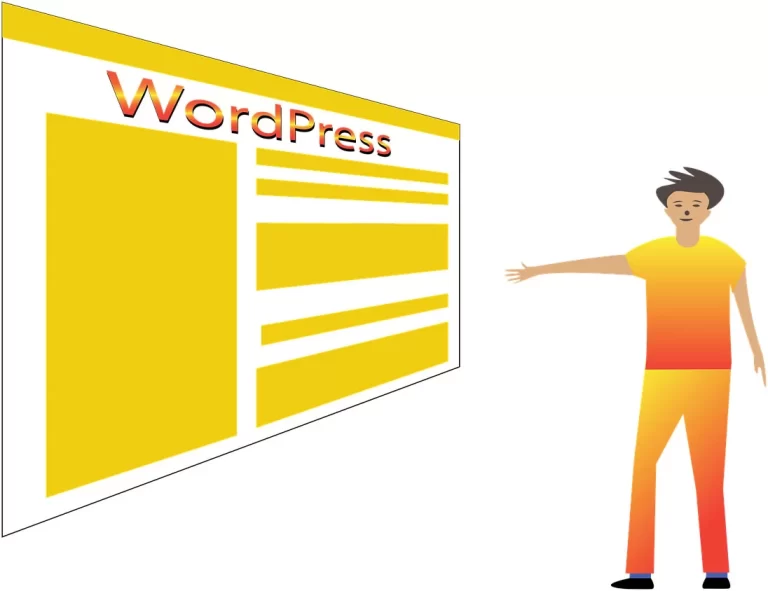Business Website Secrets – Unlocking the Secrets
5 Proven Strategies to Boost Your Website’s Business Potential
Website Design Secrets: Are you tired of seeing your website’s potential go untapped? Are you ready to unlock the secrets to growing your online business? Look no further!
In this article, we will reveal 5 proven strategies that will skyrocket your website’s success. From optimizing your website for search engines to creating compelling content that converts.
Whether you are a small business website owner looking to expand your online presence or a seasoned entrepreneur aiming to take your website to the next level, these strategies will provide you with the tools you need to succeed.
The Importance of Website Optimization
First, you need a custom website for business growth to sell your product or services. Whether you build it yourself or use the services of a web design company.
Having a visually appealing website with great content is not enough to attract customers and drive conversions. To truly unlock your website’s business potential, you need to optimize it for search engines.
Search engine optimization (SEO) is the process of making your website more visible and rank higher in search engine results pages. By implementing SEO techniques, you can increase organic traffic, improve your website’s visibility, and ultimately attract more potential customers.
Understanding your target audience is the first step in optimizing your website. You need to know who your audience is, what they are looking for, and how they search for it.
Conduct thorough market research to identify your target demographic, their preferences, and their online behaviour. This will help you tailor your website’s content and design to meet their specific needs and expectations.
Keyword Research and Optimization
Once you have a clear understanding of your target audience, it’s time to conduct keyword research. Keywords are the words or phrases that people use when searching for information online.
By incorporating relevant keywords into your website’s content, you can increase its visibility to search engines and reach your target audience more effectively.
Start by brainstorming a list of keywords that are relevant to your business and industry. Use keyword research tools like Google Keyword Planner or SEMrush to discover additional keywords and analyse their search volume and competition.
Aim for a mix of high-volume keywords with high competition and long-tail keywords with lower competition. Long-tail keywords are more specific and have a higher chance of converting visitors into customers.
Once you have identified the keywords you want to target, it’s time to optimize your website’s content. Incorporate the keywords naturally into your page titles, headings, meta descriptions, and throughout your content.
However, be careful not to overdo it or engage in keyword stuffing, as this can negatively impact your website’s ranking. Remember, the key is to create high-quality, valuable content that resonates with your audience.
On-Page Optimization Techniques
On-page optimization refers to the strategies and techniques used to optimize individual web pages to improve their search engine rankings and attract more organic traffic.
It involves optimizing various elements on your website, including the URL structure, headings, meta tags, images, and internal links.
Start by ensuring that your website’s URL structure is clean and descriptive. Use relevant keywords in your URLs to give search engines and users a clear idea of what the page is about. For example, instead of “www.example.com/page1”, use “www.example.com/keyword1”.
Next, optimize your page headings and meta tags. Your page title should be concise, descriptive, and include your target keywords.
The meta description should provide a brief summary of what the page is about and entice users to click on your link in the search results.
Incorporate relevant images into your content, but make sure to optimize them for SEO. Use descriptive file names and alt tags that include your target keywords. Compress the images to reduce their file size and improve page load times.
Lastly, use internal links to connect related pages within your website. This not only helps search engines understand the structure of your website but also encourages users to explore more of your content. Use descriptive anchor text that includes relevant keywords for maximum impact.

Off-Page Optimization Strategies
While on-page optimization focuses on optimizing elements within your website, off-page optimization refers to the strategies used outside of your website to improve its visibility and authority.
Off-page optimization is primarily focused on building high-quality backlinks, which are links from other websites that point to your website.
Backlinks are an essential ranking factor for search engines. The more high-quality backlinks you have, the higher your website is likely to rank in search engine results pages.
However, it’s important to note that not all backlinks are created equal. Quality is more important than quantity. Aim for backlinks from reputable and relevant websites in your industry.
There are several strategies you can employ to build backlinks. Guest blogging is a popular method where you write articles for other websites and include a link back to your website in the author bio or within the content.
You can also reach out to influencers and industry experts to collaborate on content or ask for a mention or link back to your website.
Additionally, engaging in social media marketing and content promotion can help amplify your online presence and attract more backlinks.
Share your content on social media platforms, participate in industry forums and communities, and actively engage with your audience. The more exposure your content receives, the higher the chances of other websites linking back to it.

The Power of Content Marketing
Content marketing is a powerful strategy that involves creating and distributing valuable, relevant, and consistent content to attract and retain a clearly defined target audience.
By providing valuable information and engaging storytelling, you can establish yourself as an authority in your industry and build trust with your audience.
Start by identifying the topics and themes that are relevant to your target audience. Conduct keyword research to discover what people are searching for in your industry.
Create a content calendar to plan and organize your content creation efforts. This will help you stay consistent and ensure that you always have fresh and engaging content to share.
When creating content, focus on providing value to your audience. Answer their questions, solve their problems, and provide actionable tips and advice.
Incorporate a mix of different content formats, such as blog posts, videos, infographics, and podcasts, to cater to different preferences and increase your reach.
Promote your content through various channels, such as your website, social media platforms, email newsletters, and industry forums.
Encourage your audience to share your content and engage with it by leaving comments and feedback. The more your content is shared and engaged with, the more visibility and reach it will have.

Incorporating Multimedia Elements
Incorporating multimedia elements into your website can significantly enhance the user experience and make your content more engaging and memorable.
Multimedia elements include images, videos, infographics, and interactive elements that encourage user interaction.
Images can help break up text and make your content more visually appealing. Use high-quality and relevant images that complement your content. Optimize the images for SEO by using descriptive file names and alt tags.
Videos are a powerful tool for engaging your audience and delivering information in a dynamic and entertaining way.
Create instructional videos, product demos, or behind-the-scenes footage to showcase your brand and products. Host the videos on your website or platforms like YouTube and embed them on relevant pages.
Infographics are visual representations of information or data. They are highly shareable and can attract backlinks and social media shares.
Create visually appealing infographics that simplify complex concepts and provide valuable information to your audience.
Interactive elements, such as quizzes, surveys, and calculators, can increase user engagement and provide a personalized experience.
These interactive elements can also help you gather valuable data about your audience and their preferences.

User Experience and Website Design
A seamless user experience and a well-designed website are crucial for unlocking your website’s business potential.
A poorly designed website can lead to high bounce rates, low conversions, and a negative perception of your brand. On the other hand, a user-friendly and visually appealing website can increase engagement, conversions, and customer satisfaction.
Start by ensuring that your website is responsive and mobile-friendly. With the increasing use of mobile devices, it’s essential to provide a seamless browsing experience across different screen sizes. Test your website on different devices and optimize it for fast loading times.
Simplify your website’s navigation and make it intuitive for users to find what they are looking for. Use clear and descriptive labels for your menu items and organize your content into logical categories and subcategories. Incorporate a search function to help users quickly find specific information.
Pay attention to your website’s aesthetics and design elements. Use a visually appealing color scheme, choose fonts that are easy to read, and use whitespace effectively to create a clean and uncluttered layout. Incorporate high-quality images and graphics that enhance your content and reinforce your brand image.
Lastly, optimize your website’s loading speed. Slow-loading websites can frustrate users and lead to high bounce rates.
Optimize your images, minify your code, and leverage caching techniques to improve your website’s performance. Regularly monitor your website’s loading speed and make any necessary optimizations.

Tracking and Analysing Website Performance
To truly unlock your website’s business potential, it’s essential to track and analyze its performance. By understanding how users interact with your website and where improvements can be made, you can make data-driven decisions to optimize your website and drive better results.
Start by setting up website analytics tools, such as Google Analytics, to track key metrics like website traffic, bounce rates, conversion rates, and user behavior. Analyze this data regularly to identify trends, patterns, and areas for improvement.
Pay attention to your website’s conversion funnels. A conversion funnel is a journey a user takes from their initial interaction with your website to completing a desired action, such as making a purchase or filling out a contact form.
Identify any bottlenecks or drop-off points in the funnel and optimize those areas to increase conversions.
Use A/B testing to experiment with different website elements, such as headlines, call-to-action buttons, and page layouts.
Split your audience into two groups and present them with different versions of your website. Compare the performance of each version to determine which elements are more effective in driving conversions.
Leverage heatmaps and user recordings to gain deeper insights into how users interact with your website. Heatmaps visually represent where users click and scroll on your website, while user recordings provide recordings of individual user sessions.
These tools can help you identify usability issues, areas of interest, and opportunities for improvement.
Regularly review your website’s SEO performance. Monitor your keyword rankings, backlink profile, and overall organic traffic. Identify any fluctuations or changes in your website’s search engine visibility and make any necessary adjustments to your SEO strategy.
Conclusion
Unlocking your website’s business potential requires a strategic approach and a deep understanding of your target audience.
By optimizing your website for search engines, creating valuable content, incorporating multimedia elements, and providing a seamless user experience, you can attract more traffic, increase conversions, and maximize your profits.
Additionally, tracking and analysing your website’s performance will help you identify areas for improvement and make data-driven decisions.
Remember, unlocking your website’s business potential is an ongoing process that requires continuous optimization and adaptation.
So, start implementing these proven strategies today and unlock the secrets to your website’s success!







